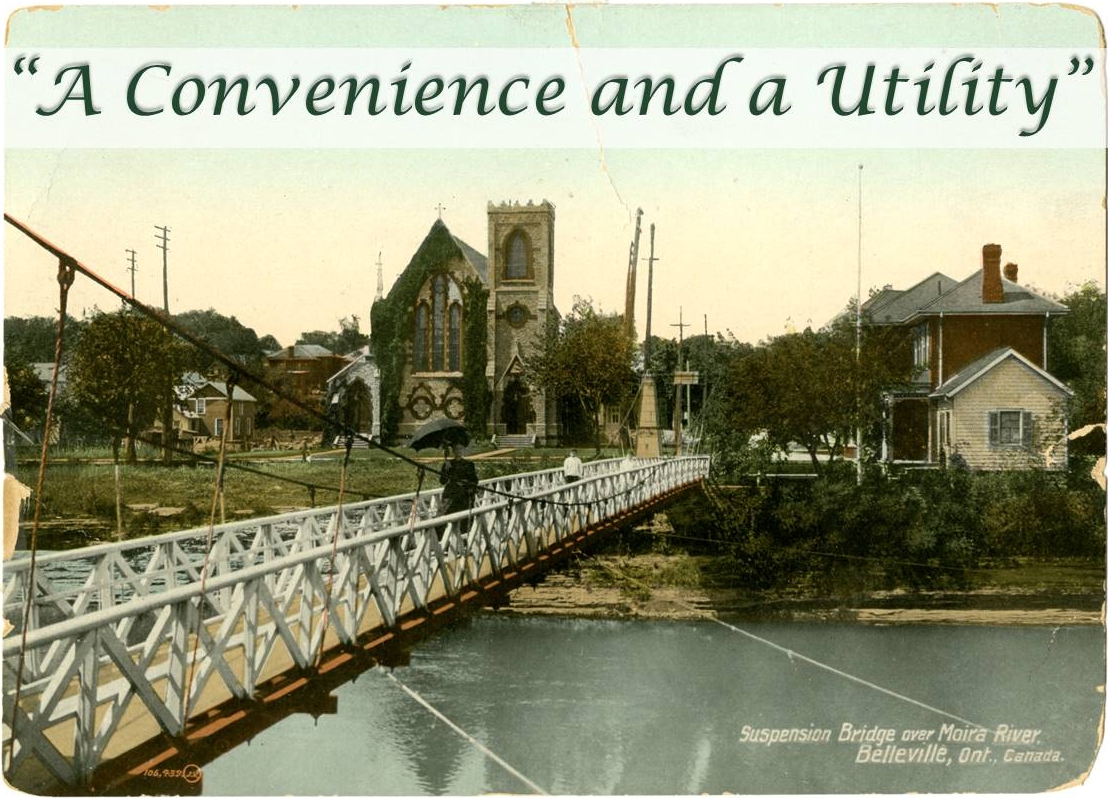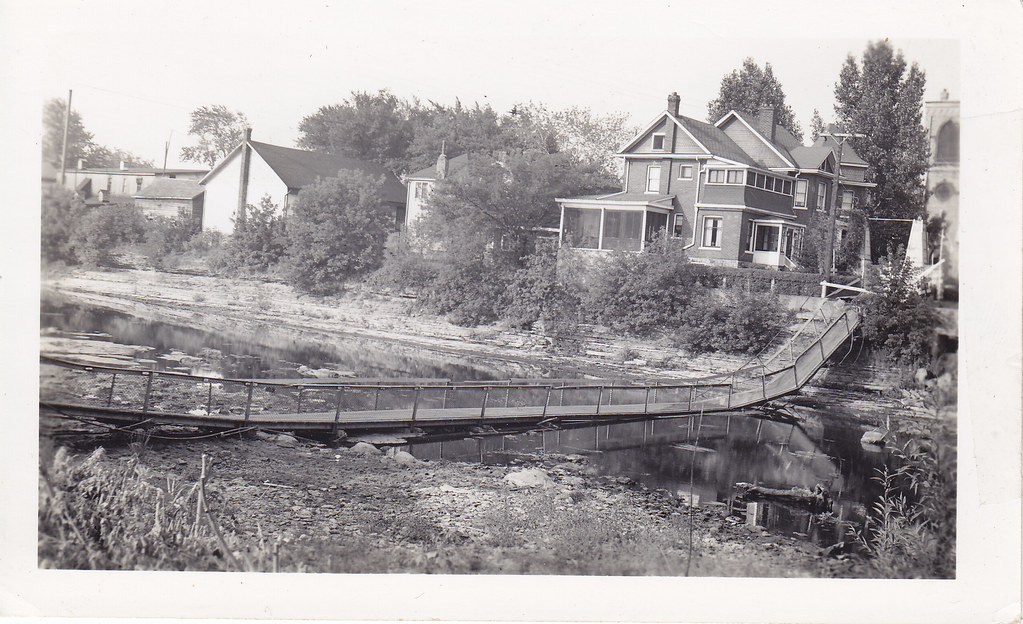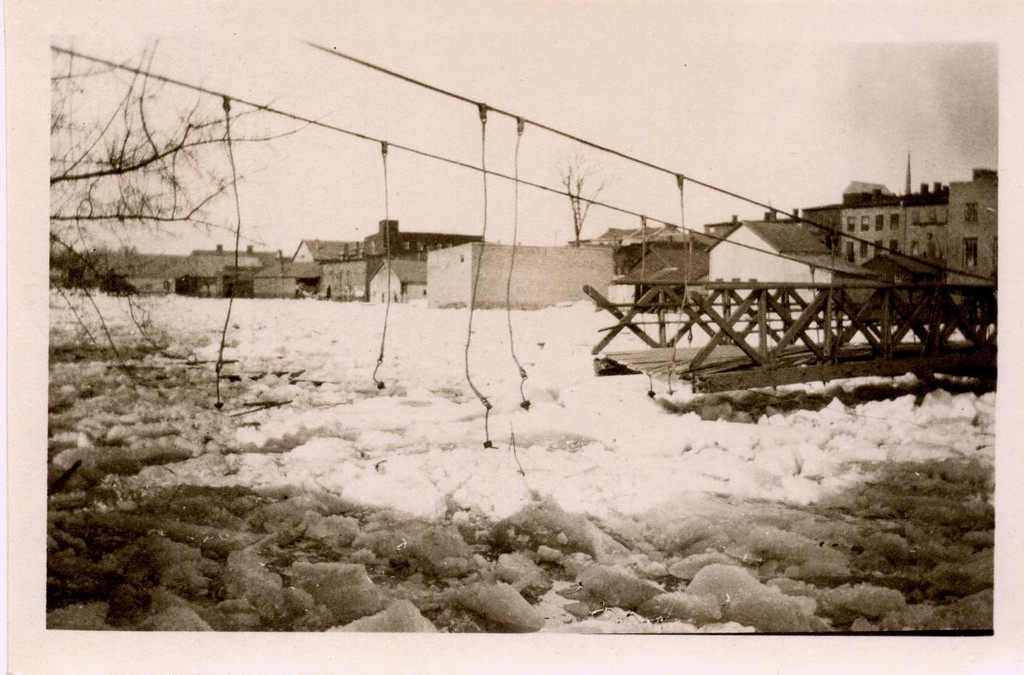The Moira river in late summer is a very different creature from the Moira river in early spring. In the days before the installation of ice-control dams, the new footbridge had to withstand high volumes of water and mountains of fast-moving ice blocks. The first test of the bridge came in 1886: this photograph shows the ice at the same level as the footbridge deck.
The church on the west bank of the river is Christ Church (Anglican), built in 1881 after the earlier structure on Moira Street West was burned down.
Similar flooding in 1918 caused significant damage to the bridge, as this photograph shows:
The picturesque Foot Bridge, a suspension structure which for years has withstood floods, is a total wreck, the greater portion being broken up in small pieces.
[Report in The Ontario Intelligencer, 21 March 1918]
The bridge was repaired and on April 1st the newspaper reported that it would re-open to pedestrians the following day.
Another flood in March 1936 caused flooding in Belleville's downtown and the footbridge was wrecked once again:
On this occasion, the City of Belleville signed an agreement with contractor Walter H. Patterson on 23 April 1936 to make repairs to the bridge. Patterson's design was to cost $1,800 and would reuse the original suspension cables, replacing the wooden base of the bridge with a steel structure, covered with a wooden floor above it:
Again, the work was completed quickly. Mayor Harry Hill declared the repaired bridge open on 15 May 1936. He noted that:
The Footbridge was erected nearly three-quarters of a century ago. It was an excellent piece of work. The piers are fine specimens of the stone-cutter's art. The original cables are still doing duty. The wooden part of the structure is now replaced with permanent steel. We hope the new bridge will not only be flood-proof but will withstand the ravages of time and serve many generations to come.
[Report in The Ontario Intelligencer, 16 May 1936]

Footbridge beginnings in 1873

Recent history of the footbridge, 1936-2022





